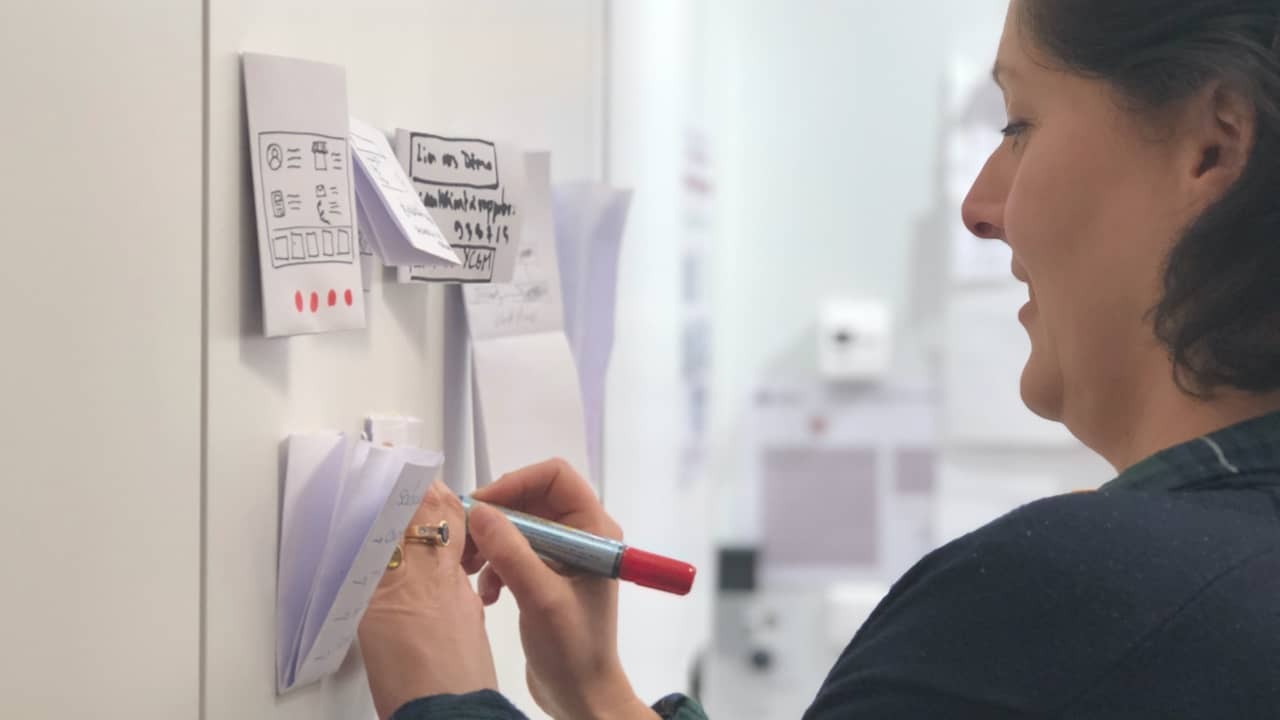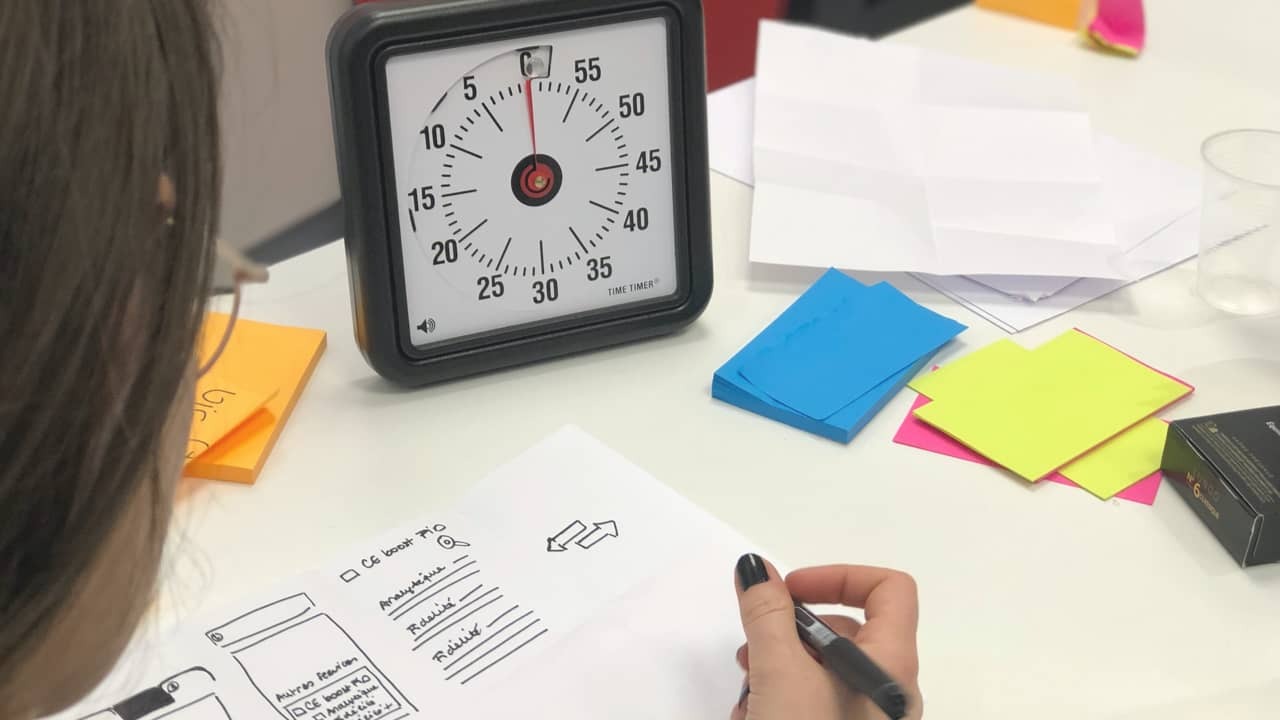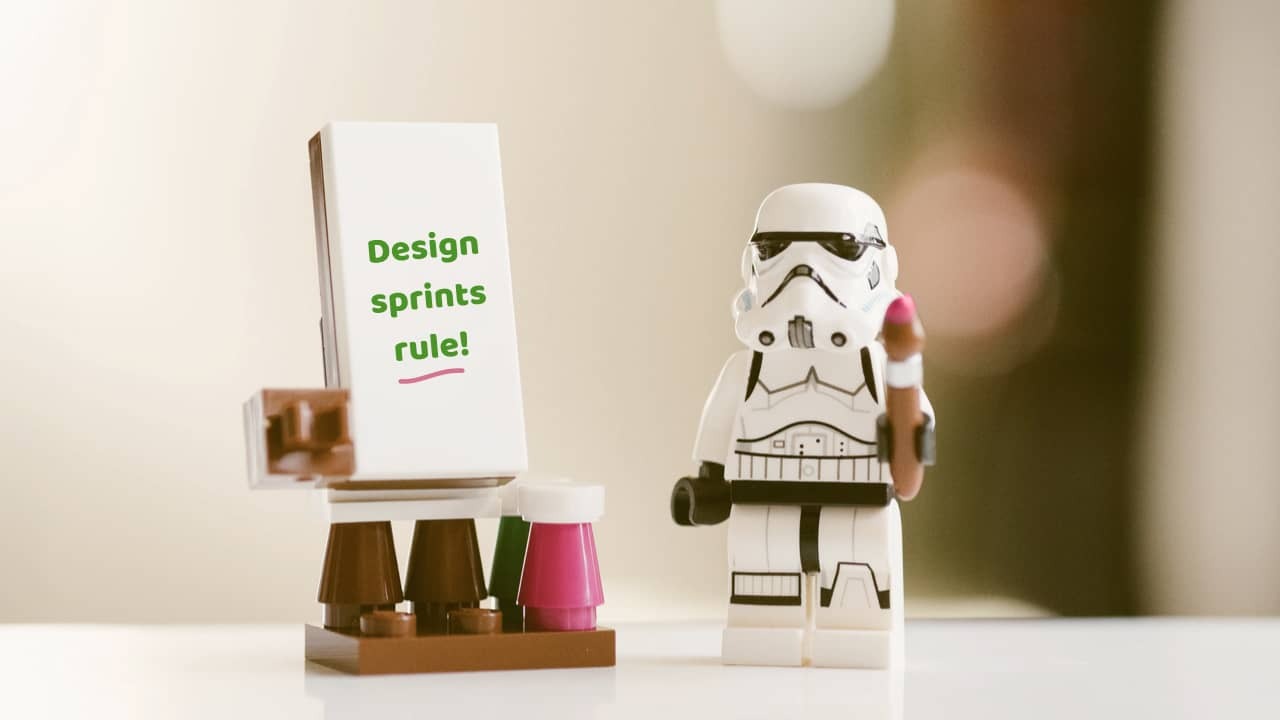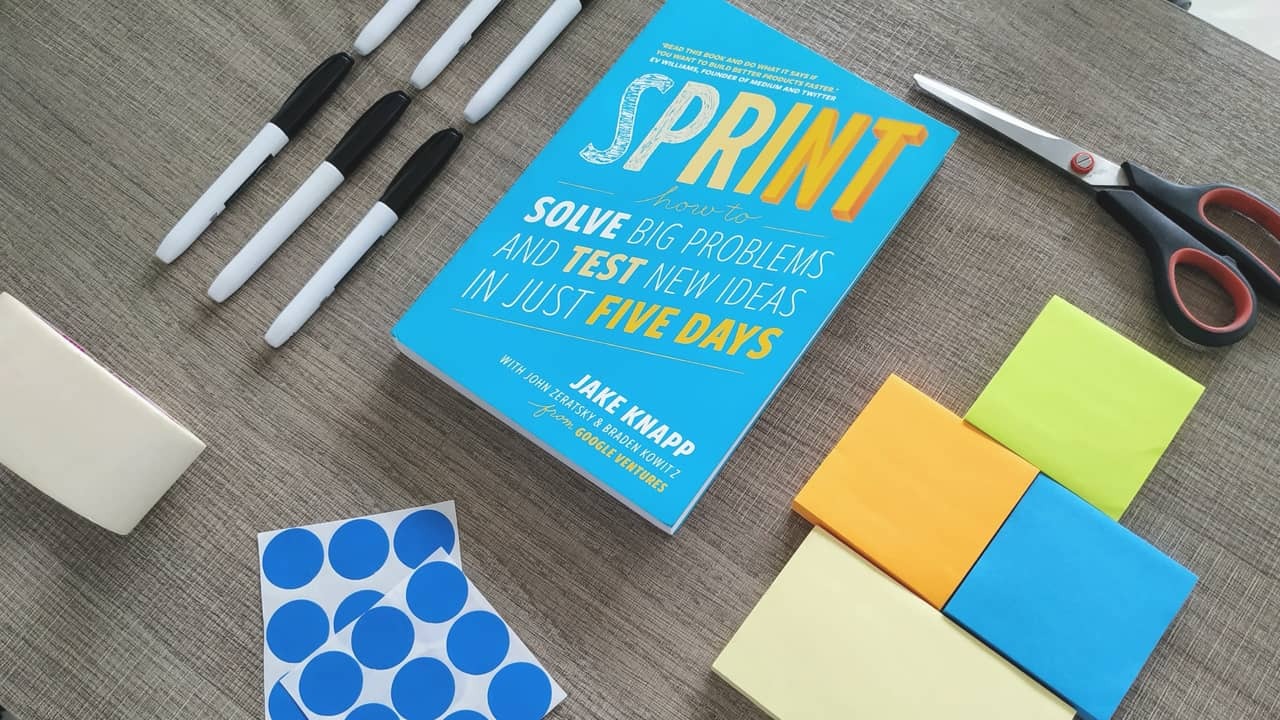Most business owners and managers know what their biggest problems are. But if you ask around, you'll find that others have their own interpretation and understanding of those problems. And without a shared understanding, it's difficult to reach an effective solution.
That is where a Design Sprint can help.
A Design Sprint can get you and your team from hopeful ideas to a tested solution in just five days
Businesses often come up with an idea they think will solve a problem without testing that idea first. They commit time, money, and energy to this solution - creating a website, an app, a marketing campaign, a brochure, for example. Unfortunately, that doesn't always work out.
The aim of a Design Sprint is to understand a problem fully, collectively generate ideas to solve that problem and select the most effective solution to test with customers without committing significant time or budget.
After the sprint, we had a brand persona, a concept we saw potential in and initial user testing to back it up
Design Sprints help turn business challenges into actionable insights, all in the space of a working week. Imagine being able to go from a problem on Monday to a potential solution on Friday. That is the real power of Design Sprints.
Here is a short 90-second explainer video from Jake Knapp, inventor of the Design Sprint and Design Partner at Google Ventures:
Are Design Sprints just another design service?
Design is part of the Design Sprint process, as you might expect given its name. And there is always creativity at the heart of solving any problem. However, this is not about design agencies selling another creative service or promising that design can solve every problem.

Design is not the 'output' or result in a Design Sprint - it is to deliver a tested solution to a problem. The purpose is to establish a robust potential solution that can be further explored and developed, safely in the knowledge that it has been tested with real customers.
Design Sprints are not a tool exclusive to us creative types. They can be run by any team in any business.
The Process
Pre-Sprint
Select a problem or challenge. This can be a grand problem like "Increase our customer retention" or a more modest problem like "Improve how we handle returns".
Choose a facilitator to organise and run the Design Sprint. They invite people to take part from across the business — people who are willing to contribute to solving the problem. External experts and highly engaged customers are welcome too!
It's important to note that day-to-day business should stop for everyone involved in the process: no laptops, phones, emails or Slack messages. Ensure complete focus on solving the problem at hand.
Day 1, Monday – Understand the problem
The process begins by taking a whole day to focus on and truly understand the problem.

This detail in understanding comes from knowing your customers and creating a map of their experiences with your product, service, or the whole business. What problems do they currently encounter? Where are the pain points? The challenge is to decide which of those problems has the most impact on customer experience. That's your 'target' problem.
Day 2, Tuesday – Sketch ideas
The second day is about coming up ideas - and lots of them - to solve the problem. Time to get sketching some great ideas! A technique called 'Crazy 8s' helps to generate as many ideas as possible. No previous design experience required!

Day 3, Wednesday – Sketch a solution
The 'Crazy 8' sketches are then refined to a final solution sketch. Participants vote on their favourite idea, with ample time for discussing the solution in detail. Everyone gets a chance to be heard.
Day 4, Thursday – Create a prototype
The fourth day focuses on creating a prototype. This is a simplified working demo based on the solution from the previous day.
The prototype needs to be ready for testing the following day. Time is limited, so the prototype is designed with just enough detail to verify the participant's ideas. Sometimes even paper-based sketches are produced to test ideas.

Day 5, Friday – Test the prototype
Time to test the prototype with real people and start generating feedback, without committing months of resources to develop the full thing. This is the crucial point in the process and the most exciting part!
LEGO – a design sprint success story
LEGO was one of the first companies to implement Design Sprints. They ended up doing this at scale across their whole company, for both their physical and digital products. A great example of how Design Sprints can work, even if you're problem-solving isn't a website, app, or other digital product.

When LEGO felt that ideas for new products had stagnated, and collaboration between their creative teams was the root cause of the problem, they put a stop to all work for two months. They utilised Design Sprints to identify specific issues and quickly test potential solutions to help their teams better communicate and work together, with creativity flowing again.
The Benefits of Design Sprints
The Design Sprint process can scale up to tackle multiple problems in complex organisations. Likewise, it can be used to address a single issue in a smaller business.
In any business, a Design Sprint has the same benefits:
Create alignment around a problem
Teams from different departments come together. Customers can get involved. Management takes part.
Make people feel valued
Participants of a Design Sprint often find that this five-day process is a welcome break. They feel valued having had the chance to be heard and contribute to solving a problem for the organisation they work for.
Produce something tangible
This isn't about drawing idealised concepts on a whiteboard or wishful sketches on the back of a napkin. This is about creating a working demo of a solution to a problem that could be huge for the future of your business or organisation.
Test solutions with real users and get actionable feedback
Getting something in front of customers is a crucial part of the Design Sprint process. That's what makes it so effective. The fifth day is when you find out if the week's work has been worth it.

The worst-case scenario is that the solution simply doesn't resonate with your customers or solve the initial problem. But even then, you will have learnt something. And you will have engaged with customers. They will appreciate the chance to take part in the process and improve something they are invested in. And you can take what you've learnt into a follow-up Design Sprint.
Enjoy reward without risk
You get to skip the most time-consuming steps in the design process (development and launching), validating your idea early. This saves months of budget, time, and energy.
Design Sprints enable you to validate potential products, services, and processes in under a week. Incredible when you think about it.
What you need to run a Design Sprint
First, you need a problem or challenge. An area for improvement or development in your business. A goal.
Do you need to improve customer retention? Do you want to expand into a different market by offering a new service? Maybe you need to test an idea for your product, app, or website?
Every business has something they would like to fix or an idea they would like to test with customers without risking anything. And that's one of the main reasons to run a Design Sprint.
You will also need:
- A facilitator to organise and manage the Sprint, run it each day, and follow up afterwards
- Someone to create a prototype you can test (usually a designer or developer)
- Enough people to take part in the Sprint and contribute their ideas (between 10 and 30 people but can vary)
- People to test the solution (ideally, customers)
- A Design Sprint kit with materials like whiteboards, post-it notes, thick pens, etc.

You may need some guidance with your first Design Sprints from experienced facilitators. But this is a process that can eventually be run in-house, without any significant disruption to normal business.
You are improving parts of your website, streamlining your hiring process, or launching a new marketing campaign. These are just a few scenarios when a Design Sprint could be extremely useful in giving you a head start. In fact, it's difficult to imagine when a Design Sprint can't help you get the answers you need quicker, easier, and cheaper.
All in five days.
So the next time you have an idea or face a problem that has you thinking "Where do we start?!", don't jump straight into thinking about solutions. Let Design Sprints give you the insight you need to find the right solution and test it early.
We highly recommend that you join the likes of Facebook, Apple, Google, and the UK Government by running a Design Sprint of your own.
Design Sprint resources
- Book: The Design Sprint book ("Sprint: How to Solve Big Problems and Test New Ideas in Just Five Days")
- Website: The Design Sprint Kit and case studies
- Case study: How LEGO run Design Sprints
- Article: Design Thinking vs Design Sprints, what's the difference?
Need help getting started?
If you would like to explore how Design Sprints could work for your business, get in touch for some free advice.